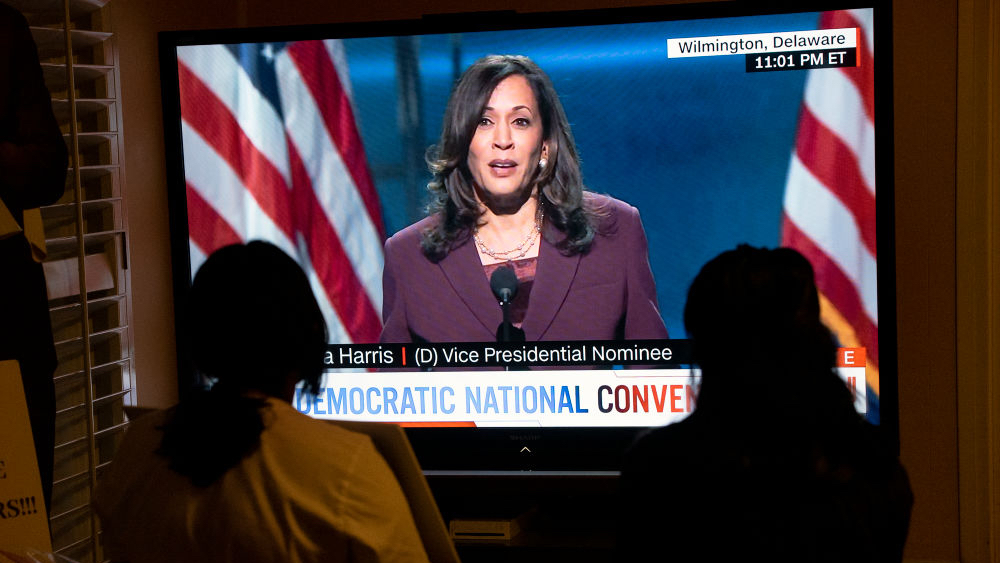If you’re interested in sharing your opinion on any cultural, political or personal topic, create an account here and check out our how-to post to learn more.
____
Kamala Harris may racially identify as Black and Indian American, but her politics too often uphold whiteness. Whiteness is the positioning of white people’s customs, values, culture and beliefs as the standard by which all other groups are compared. This plays out in our values, policies, laws and the ways in which we judge ourselves and others.
If whiteness is at the center of politics, Black and Indian racial identities are not enough to ensure justice for marginalized people.
Kamala Harris has publicly drawn attention to her Black and Indian heritages. However, this embrace of her racial heritages is not evidenced in many of her policies or rhetoric (until her Democratic party presidential run). Many of her policies have promoted whiteness while touting social justice. Her “top cop” policies, such as the OpenJustice initiative, a database that provided public access to crime statistics and use of police force, were betrayed by her truancy law. That law was said to be an attempt to prevent future criminal behavior by punishing school absenteeism. However, there are cultural implications to such punitive measures that are in opposition with Black and Indian cultures that traditionally emphasize collectivism.
The truancy law is an example of how whiteness — again, the positioning of white people’s customs, values, culture and beliefs as the standard by which all other groups are compared — led to racial injustice. This law placed the sole responsibility (emphasizing white American values of self-reliance and individualism) on parents and not educational institutions. A focus on those institutions would have been an example of emphasizing the non-white American value of collectivism that looks to the community to explain the challenges of the individual. Harris imprisoned parents instead of creating policies that addressed underfunded schools; curriculums that do not sufficiently integrate the non-white-washed histories and lived experiences of Black, indigenous and other people of color; and teachers who are more likely to administer harsher punishments to Black and Latinx students than white students for the same violations.
Clearly, racial identity does not necessarily translate into action that prioritizes racial justice. However, most Americans do not understand the complexities of racial identity. This lack of insight keeps us trapped in a cycle of push and pull against racism and antiracism. It contributes to celebration of progress when there is none. There may be melanin in the room, but there is no diversity of ideas and priorities.
This fall in my class at Rowan University, Psychology of Ethnic Identity and Community, my students will learn a lot about racial identity. I’m sure Kamala Harris’s biracial identity will provide plenty of opportunities for discussion and application of the scholarship my students will learn. Let me share some of the basic terms with you.
The first thing you should know is that racial identity is the category or categories that a person uses to name and define themselves, and the meaning they give to those names and definitions. Racial identity is influenced by several factors, including racial ancestry — the race of your parents, grandparents, etc.; cultural attachment — exposure and attachment to one’s racial group(s); physical appearance — how one looks racially; and one’s awareness of the political connotations of being in one or more racial groups.
How one’s racial identity develops is typically described using a racial identity model. A racial identity model is an explanation of how one moves from one stage or phase of racial identity to another. There are several models of racial identity. Many racial groups have at least one model of their own. There are even models for people, like Kamala Harris, who have biracial identities.
W.S. Carlos Poston’s biracial identity development model is one the most known models on the topic. Poston proposed that biracial people go through several stages of figuring out their racial identity. These stages include lack of awareness of racial identity; enmeshment with one racial identity group and denial of the other; appreciation of both racial identities; and integration, where one may still primarily identify with one group but appreciate the mixture of their multiple racial heritages.
Harris has a right to choose and share racial identity any way she chooses. But racial identity is not enough.
We need leaders who will use their lived experiences to fight for justice for the most marginalized groups. This justice should not look like punishing people for not living up to whiteness. It should look like challenging the cultural and belief systems that contribute to whiteness in the first place. We do not need leaders who will only publicly identify as Black and Indian when it is politically convenient.
Kamala Harris’s biracial identity and nomination for vice president are not signs of progress if her politics will promote whiteness. As Americans learn more about the complexities of racial identity and whiteness, maybe we can begin to demand substance and stop being so easily appeased by the superficial.
____
Jonathan Mathias Lassiter, Ph.D. is the award-winning co-editor of ‘Black LGBT Health in the United States: The Intersection of Race, Gender, and Sexual Orientation’ and received the Gay and Lesbian Medical Association's Achievement Award. Dr. Lassiter is a licensed clinical psychologist, professor, author, public speaker and choreographer. Twitter: @matjl
